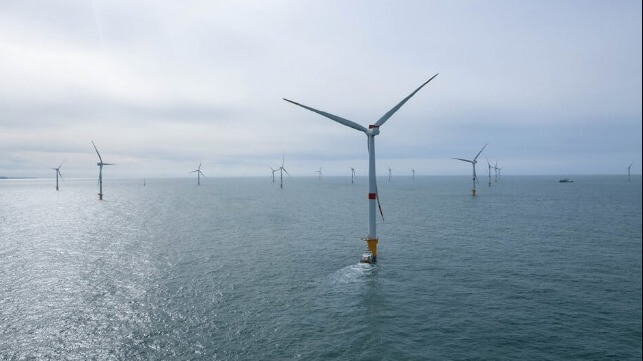France Secures $11B EU Financing to Accelerate Offshore Wind Development

Construction of two offshore wind farms in France is set to proceed following the securing of a €10.8 billion ($11.6 billion) financing package from the European Commission. As part of its net-zero energy transition ambitions and determination to reduce dependence on Russia’s oil and gas, France will now proceed with the construction and operationalization of two bottom-fixed offshore wind farms.
The first project to benefit from the financing is a South Atlantic wind farm which is expected to have a capacity of 1,000 to 1,200 MW and to generate at least 3.9 TWh of renewable electricity per year. The second is a Normandy wind farm that will have a capacity of 1,400 to 1,600 MW to generate at least 6.1 TWh of electricity annually.
The European Commission financial package was approved as part of the French scheme that was set up under the State aid Temporary Crisis and Transition Framework (TCTF) adopted by the Commission in March last year. The financing is intended to support renewable offshore wind energy in France to foster the transition towards a net-zero economy. The scheme will run for 20 years.
“With this €10.82 billion scheme, France can deploy offshore wind capacities faster, in line with the EU Strategy on Offshore Renewable Energy. It will also help France reduce its dependence on Russian fossil fuels while ensuring that any potential competition distortions are kept to the minimum,” said Margrethe Vestager, Executive Vice-President in charge of competition policy.
Securing financing for the two wind farms comes at a time when France is facing criticism over sluggishness in the deployment of offshore wind compared to some of its European neighbors. The United Kingdom and Germany, so far, have led Europe with the largest deployment of offshore wind farms. Despite France’s advantageous geography with over 3,500 km of coastline and one of the best wind resources in Europe, auction rounds have been limited and slow to launch.
In May this year, the French government sought to accelerate the deployment of offshore wind by publishing a new auction schedule that clarifies timelines, identifies new sites, and extends existing ones. The schedule also set out simplification measures that would drastically reduce the overall time to build wind farms.
The country has a target of achieving an installed offshore wind power capacity (both bottom-fixed and floating) of 18 GW by 2035 and 45 GW by 2050. France currently has three operational offshore wind farms, after the May 2024 commissioning of the project off the coast of Fécamp with a capacity of 497 MW, marking the first wind farm in Normandy. The earlier farms include one of 480 MW off the coast of Saint-Nazaire and one of 496 MW in Saint-Brieuc Bay.
According to the European Commission, the aid will take the form of a monthly variable premium under a two-way contract for difference (CfD), which will be calculated by comparing a reference price with the market price for electricity. When the market price is above the reference price, the developer will have to pay the difference between the two prices to the French authorities.
This is the second time France is receiving financial aid under the TCTF scheme. Last year the Commission approved $4.4 billion to support the construction and operation of two floating offshore wind farms in the Golfe du Lion, each with a capacity of 230 to 280 MW, and could generate 1.1TWh of electricity per year.
No comments:
Post a Comment